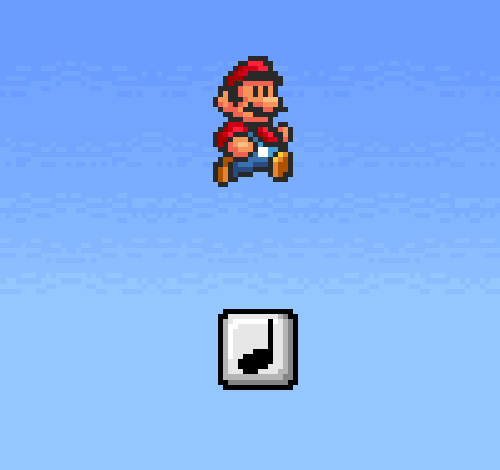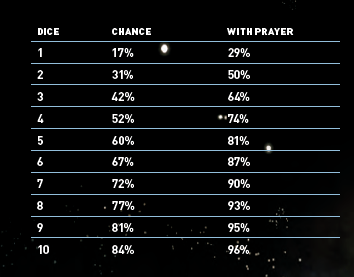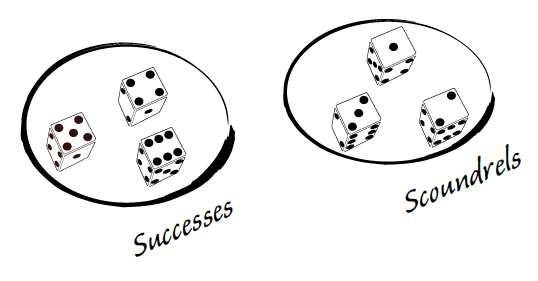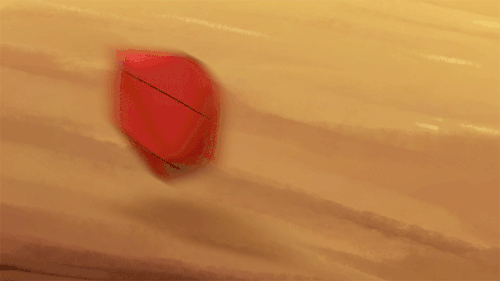How Dice Create Game Feel in Tabletop Role-Playing Games
Video game developers spend countless hours tweaking their work to produce the intangible quality they call Game Feel. Game Feel is that little spark of joy you get from tapping a button and seeing Mario jump. Even on an empty platform, without an enemy to stomp or a box to bash, it is satisfying when Mario jumps. Behind that feeling is Shigeru Miyamoto sitting in a studio with an alpha version of his game, making Mario jump over and over again, literally for days in an empty void, minutely adjusting Mario’s weight, jump velocity, landing animation, etc. until the jump feels absolutely perfect. Any time you’ve ever played a shooter and picked up a new gun, and just knew it was more powerful the moment you fired it, you’ve experienced game feel.

I’ve never seen this term come up in discussions of tabletop role-playing design. We talk endlessly about reward systems, associated / dissociated mechanics, social contracts and narrative authority. Far less frequently do we talk about the fundamental act of rolling the dice and getting a result, for good or ill, and how the design of dice systems and resolution mechanics can make that more or less satisfying on a visceral level.
Last year, I briefly played Coriolis: The Third Horizon by Fria Ligan with a couple friends. That game has deep lore, plenty of mechanical bits to chew on, and incredibly beautiful physical components. Regardless, it fell flat for us. One of my players complained that his character didn’t quite feel competent, even in things where he had specialized. At first, misguided, I tried to disprove his claim with math. Coriolis has a chart in the core book that outlines the likelihood of success for different rolls on any given check. I pointed out that a character specialized in something had a similar chance of success as a comparably specialized low-level character in Dungeons & Dragons 5E. Then I realized that was the root of the issue. In order to know his chances for success, I had to look it up on a table in the book.

Chances of success in Coriolis. You can pray for rerolls at the cost of the GM building a pool of “screw the players” tokens.
Coriolis uses a system in which you roll a bunch of D6’s together, and succeed if at least one of them comes up a 6. It’s nice and simple, but other than knowing that more dice is better, it’s completely opaque. What are your chances of at least one 6 coming up on a pool of 5d6? Apparently it’s 60%, but I have no idea how to get to that number. Contrast this with D&D’s system: roll a d20, add your numbers, get equal to or higher than a target to succeed. Putting aside critical hits for now, both of these systems are binary. You succeed or fail, nothing in between. If you have a +6 in D&D and need to hit a 15 target on average, that’s 60%. But D&D’s system has two traits that make it far more satisfying, that give it much more positive game feel.
Firstly, it’s much more transparent before the roll. Even if you aren’t thinking that a D20 represents 5% increments, you can intuit that a +6 in 20 sounds like an okay bonus. And second, perhaps most importantly, the roll itself is much more dense with information. In Coriolis no sixes came up, so you failed. In D&D, maybe you rolled a 14 when you needed that 15. “So close! Arggh!” Maybe you rolled a 1 “Wow, Garmok the barbarian really misjudged this leap.” Even though the result is binary, we can tell just how close we got. There is no mechanical difference in D&D between a 1 and a 14 in this case, but that bit of information — your distance from success– creates a little moment of nano-storytelling, something vital in an RPG. We narrate outcomes based on the difference in results, and experience them as degrees of success, even though non-binary resolution don’t explicitly exist in D&D.
This isn’t to say that somehow a D20 is inherently superior to a pool of D6’s. Torchbearer by Thor Olavsrud & Luke Crane uses a D6 dice pool, but has a more immediately transparent core mechanic than Coriolis does, where to feel okay about making a roll, you want a number of dice equal to double the obstacle of the test you are making. Once you roll, you can tell how close you are and manipulate the outcome using Torchbearer’s rather complex mechanisms. The Game Feel of Torchbearer is satisfying in a very different way than D&D’s classic D20 roll, and involves a lot more system mastery. So far I’ve mostly written about old school games on this site, which tend towards simple, single-roll resolutions, but Torchbearer is one of my favorite games, for almost the opposite reason. The complexity of its dice mechanics compliment the granularity of detail of the characters, contributing to its game feel, which is massively concerned with small details and individual moments. Each roll of the dice and manipulation of the results becomes a detailed narrative beat, focused on the specifics of the character.

Illustration from Torchbearer. Shaking your fist at a pile of failed dice and calling them “Scoundrels!” is also very cathartic.
There are folks out there who pay D&D almost exactly as written, but swap out the D20 for 2D10. The result is that you get far more rolls in the middle range, so the characters’ actions become more predictable, and their skills and modifiers become more relevant. The advantage here is that it mostly eliminates the problem of the player who spends the whole evening never rolling above a 5, a much more likely event when they are rolling D20’s. I’d argue though, that you lose as much as you gain, but the thing lost is much more intangible. It feels good to roll a D20_._ Maybe it’s just because D&D is the behemoth of the hobby, but D20’s feel different from any other die. The near-sphere of triangles rolls just enough to be satisfying, and has a kind of definitive, singular authority to it. It is admittedly chaotic, but by cutting the sessions where you roll crap the whole time, you also cut out the ability to shout “Natural 20!” and have the whole table clap as you indulgently narrate an gory bugbear-slaying.
Stars Without Number, by Kevin Crawford, does a brilliant job of harnessing dice math to produce game feel. Skill rolls, made outside of combat, take after Traveller and are rolled on 2d6. You’re likely to get results of about 7, so if you have a couple points in a skill you can feel relatively confident that it’ll work with some level of consistency. Your character feels competent in the things they are trained for. All combat rolls, however, use a D20 system straight from D&D. This makes combat feel more chaotic, frenzied and unpredictable, because it is.
Other games have eschewed dice entirely for other ways of resolving tasks and creating game feel. The most dramatic game feel I have ever experienced in Tabletop has been in the game Dread by Epidiah Ravachol and Nathaniel Barmore. Dread is a game for telling horror stories together, which eschews dice as a resolution mechanic in exchange for a Jenga tower. As the danger ramps up and blocks get pulled from the tower, the presence of the unstable object, brimming with potential energy, dominates the table. The fun in Jenga comes from that persistent tension, that at any moment there is going to be chaos and noise and a mess that wasn’t there before. Dread harnesses that brilliantly, turning that gleeful anticipation into something horrifying because the collapse of the tower means the violent death of a player character.
Next time you’re playing a game, think about how you feel when you roll and manipulate the dice. Once the result is clear, what’s your emotional reaction? How did the design of the dice mechanic influence what you felt? Consider, maybe, that choosing to use the icosahedrons of chaos just because they are fun to roll and come in every color imaginable is just as legitimate a game design decision as a meticulously-tuned probability curve.
